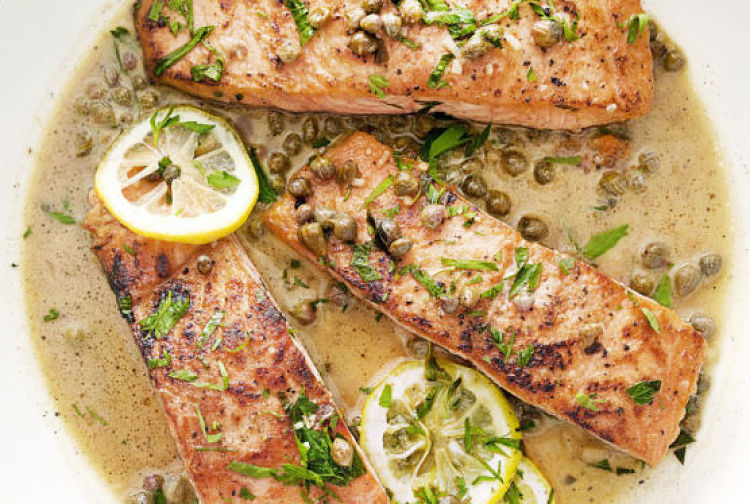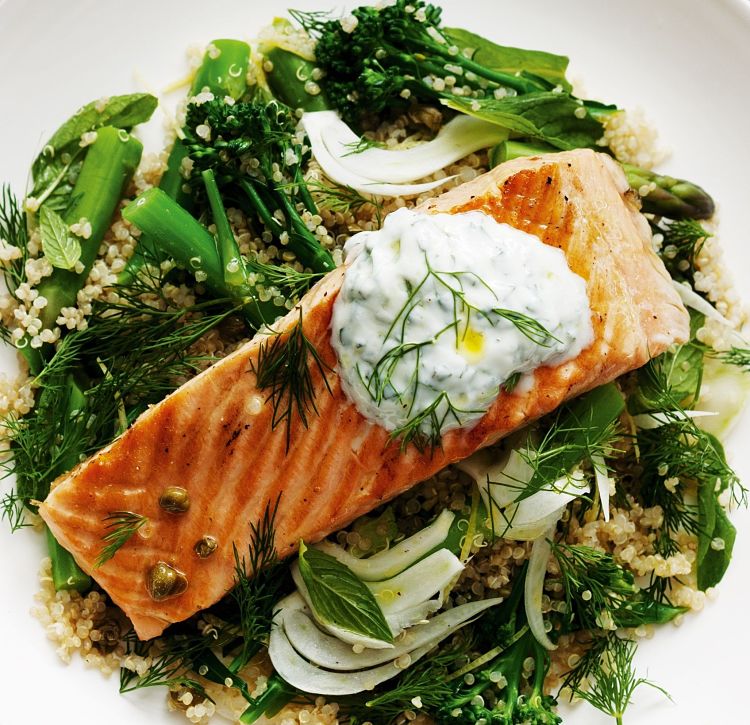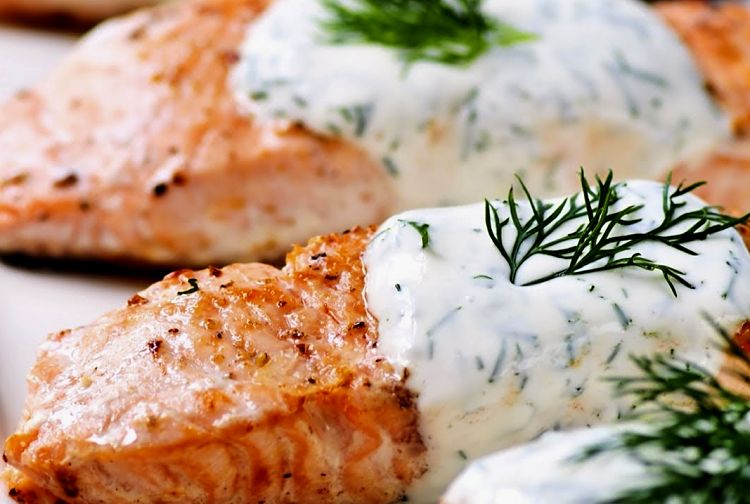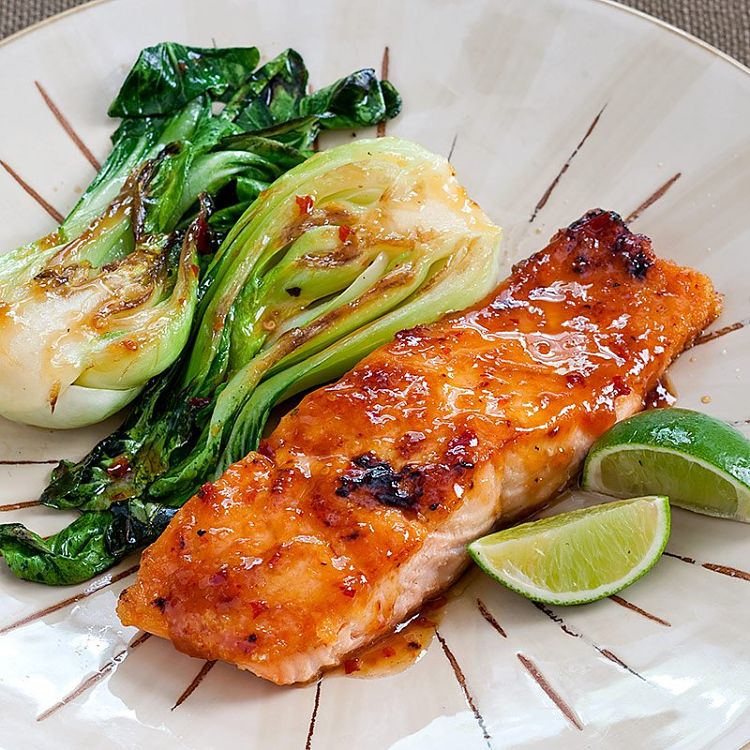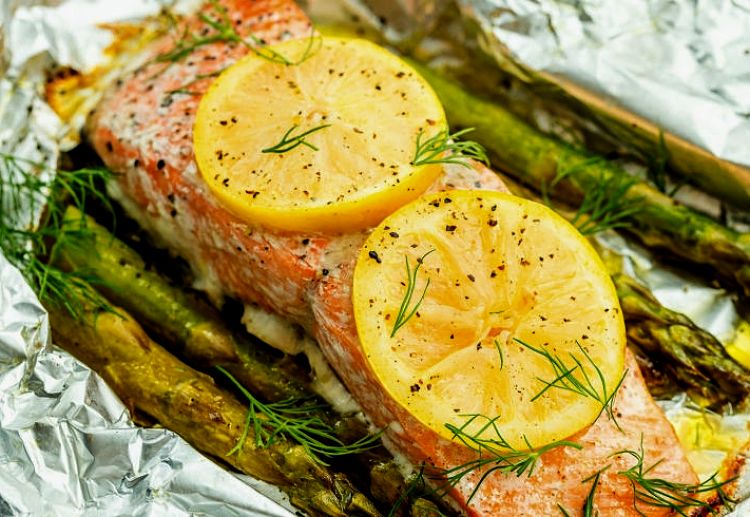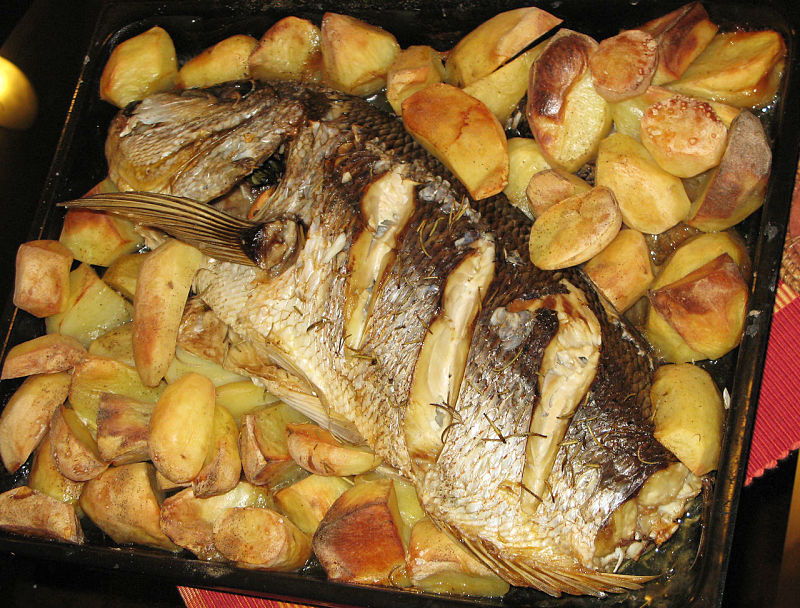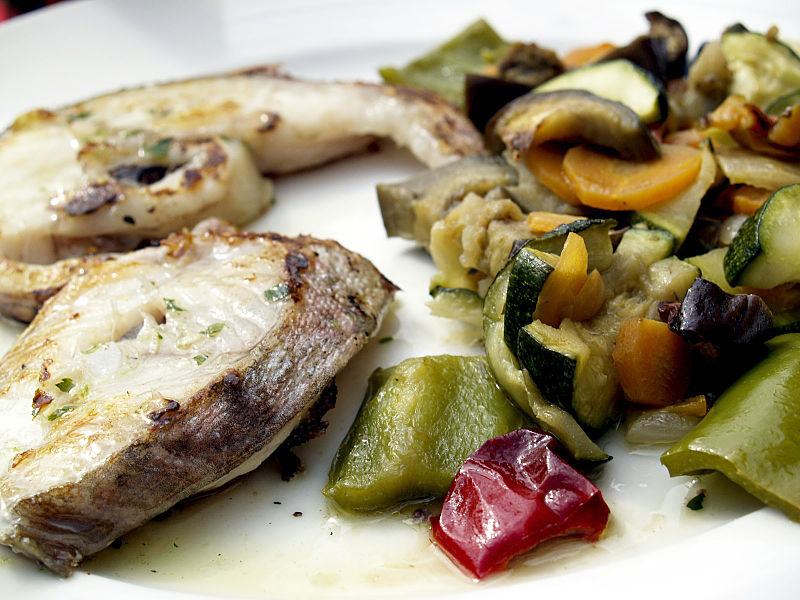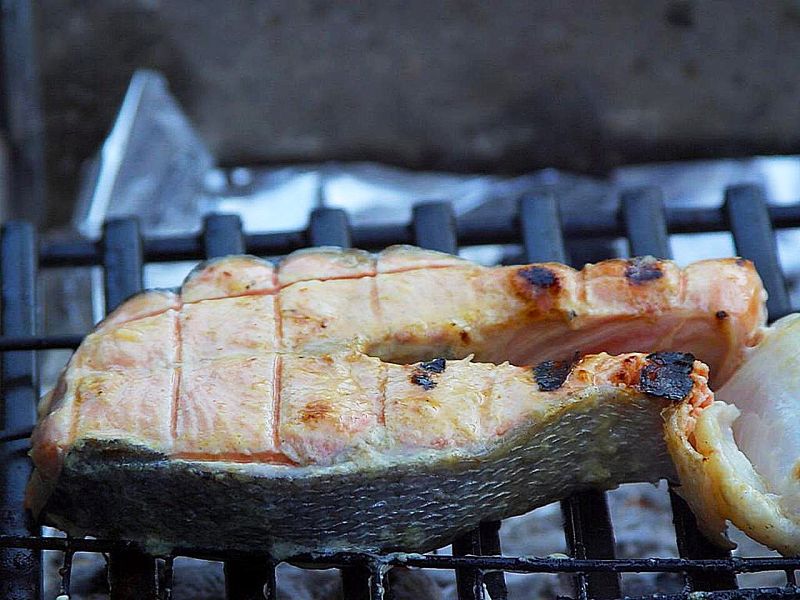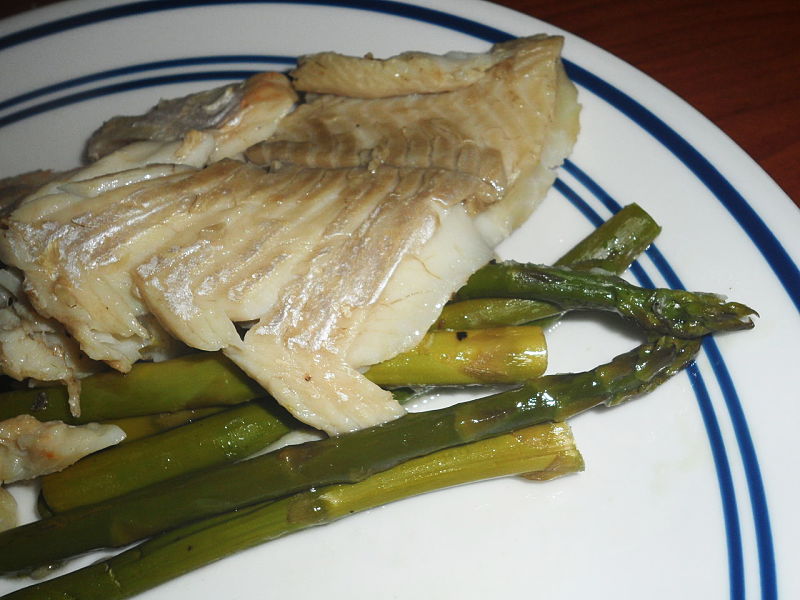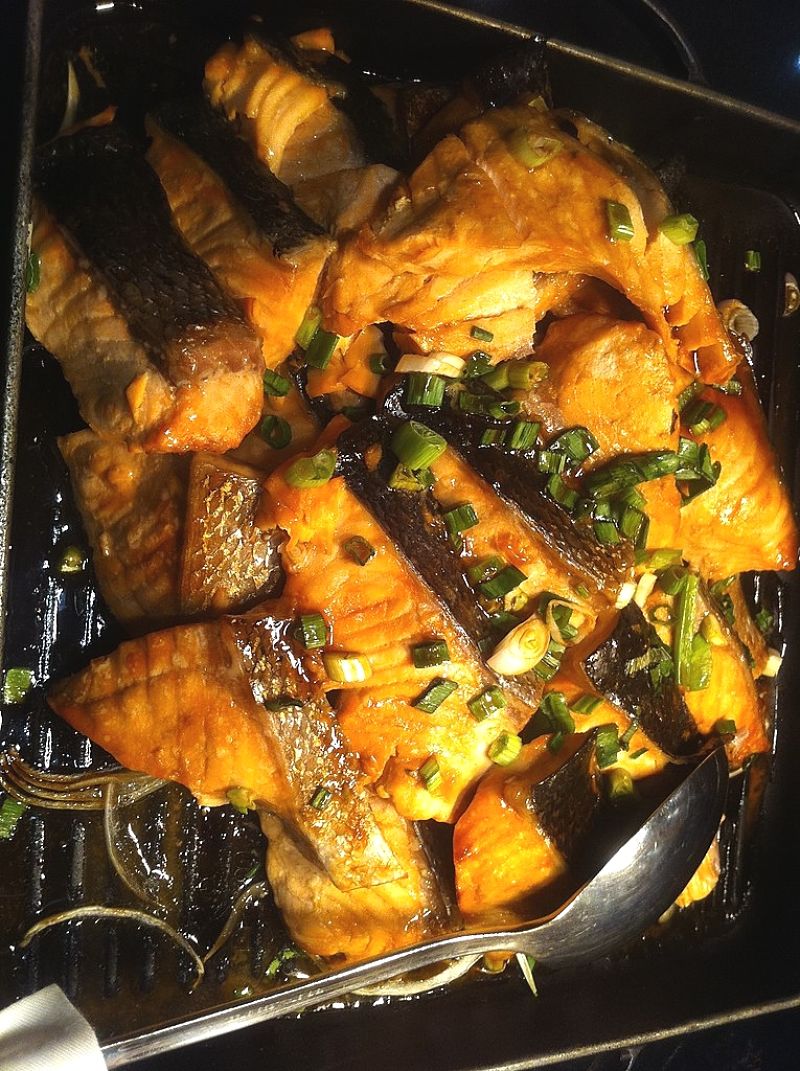Frozen Salmon Cooking Times - Instructions For Grilling, Baking
Most fresh or smoked salmon is frozen at some time between when it is caught and processed, and when it is displayed for sale, even if it’s not frozen solid.
It is not widely known that thawing any fish or other seafood incorrectly can ruin the taste, texture the quality of the fish. The longer the fish is left thawed the quicker it may start to spoil.
So it may be better to buy frozen salmon, provided you know how to cook fish properly. Never run lukewarm or hot water over a lovely piece of frozen salon to thaw as it will lose its flavour, ruin texture and it will taste mushy. The same applies to thawing salmon in a microwave oven, which is only recommended for large thick fillets.
The secret is: Frozen salmon does not have to be thawed at all - you can start cooking it straight away - just grill, bake, barbecue, broil or fry the salmon frozen. It will taste much better, have a firmer texture, but you need to know how to cook frozen salmon properly. There are lots of fabulous salmon recipes to tryincluding Honey Mustard Salmon.
This article describes the correct methods to thaw large pieces or fresh or frozen salmon, and to cook frozen salmon in various ways.
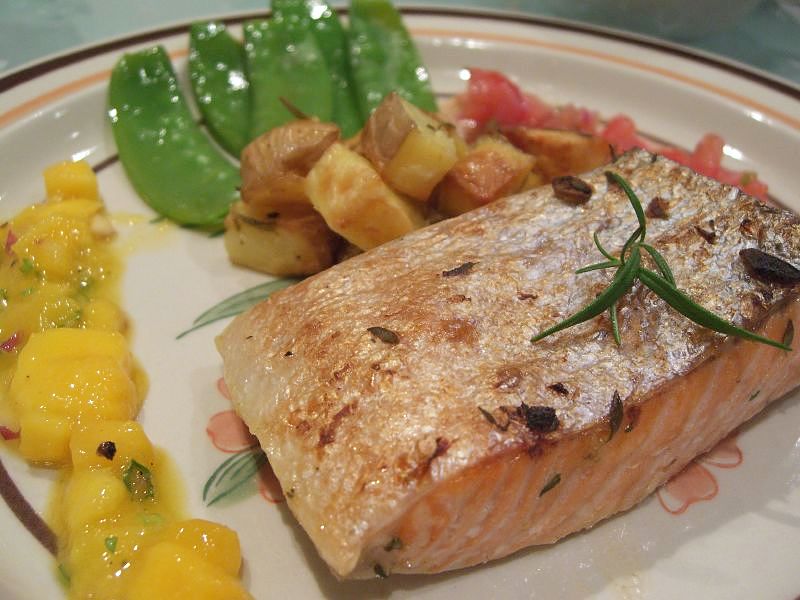
Thawing Whole Salmon and Large Fillets
Large pieces will need to be thawed before cooking. This has to be done slowly by leaving the covered salmon overnight in the refrigerator. Short cuts don’t work.
How to Grill and Barbecue Frozen Salmon Fillets and Steaks
Lightly brush or rinse off any icy glaze on the salmon fillets with a little cold water. Pat the salmon dry with a paper towel and then brush with a small amount of a high smoke temperature oil such as rice bran peanut or grape seed oil. Use a very hot grill and brown one side first (about 3-5 minutes), flip over and brown the other side ( about 3 minutes) and then reduce the temperature and cook for a few minutes more to ensure the inside has cooked. Total cooking time is about 6-8 minutes.
Timing depends on your equipment and temperature. Smoked salmon is easier to cook than fresh salmon, as it is more forgiving. Use a fork to look inside. Cooked flesh appears opaque rather than translucent. Don’t overcook the salmon.
How to Barbecue Frozen Salmon Fillets and Steaks
The instructions are similar to those for grilled salmon. Preheat your BBQ to medium heat and brush the salmon filets with a little oil.Place the salmon directly onto the BBQ plate or grill. Cook for 3 minutes on each side. Salmon can also be barbecued by wrapping in foil (see below under baking).
Whole salmon - To cook a whole salmon you will need to use it fresh or thaw it out for several hours in the refrigerator. Pre-heat a BBQ with a cover (oven) on a medium heatfor about 10 minutes prior to cooking the salmon. Position the whole salmon in the center of a large piece of baking paper, sprinkle a little oil over it and a add a little salt and pepper. Place garlic and ginger slices into the cavity with fresh herbs (dill, lemon thyme, coriander, parsley). Put the salmon into the BBQ and reduce to low. Bake salmon for about 20 minutes per kg.
How to Pan Fry Frozen Salmon Fillets and Steaks in a Frying Pan or a Hot Plate, Griddle
Heat about one tablespoon of peanut, rice bran or olive oil in a medium size, thick frying pan over moderately-low heat. Rub sea salt and a small amount of oil into the salmon skin. This makes skin crispy. Cook skin-side down for about 4-6 minutes then turn over and cook the other side for 4-6 minutes or to your preferred doneness. Lower the heat to low and cook for a further 2-3 minutes before serving. This allows the inside to continue cooking.
To pan fry large salmon cutlets add a little oil to a hot pan or grill plate and cook at moderate to high temperature for 4-6 minutes each side. Remove from the pan or plate and set aside for about 2 minutes before serving.
Oven Baking Frozen Salmon Filets
Lay the frozen salmon fillets or whole fish (thawed) onto a large sheet of foil that has been covered with an equally large piece of baking paper. For whole salmon, place herbs, spices and slices of lemon and orange into the cavity of salmon rubbed with salt. Then pour a cup of dry white wine over the salmon. For filets sprinkle each with herbs and add drops of lemon juice. Extend the foil over the salmon to retain moisture and bake in the oven at 170 degrees C (340 degrees F) for 15 minutes for each kilogram (2 pounds).
Cooking Frozen Salmon Filets in the Microwave
Many frozen salmon fillets come in plastic pouches ready for the microwave. Simply follow the directions.
Larger pieces of salmon should be defrosted first. Place the unpacked salmon filet on a microwave-safe plate and using the “Defrost setting” (generally about 30 % power) thaw for about 1-2 minutes. Check to ensure that the salmon feels warm, which is a good way to check if its defrosted. Set the fillet aside for 1-2 minutes. Repeat this process 3-4 times to ensure the fillets are defrosted.
Cut the defrosted salmon fillets into portions that are no more than 2 inches ( 5 cm) thick. This is important to ensure the salmon cooks properly. Add salt and pepper to the fillets taste. Various herbs and spices and lemon juice can be added at this stage. Next add about two tablespoons water to the plate. This helps to keep the salmon moist. Cover the salmon and plate completely with a layer of microwave-safe plastic wrap, but don’t seal it completely so that steam can escape.
Cook the salmon on a high setting for 3-6 minutes depending on the size and thickness of the pieces and your particular microwave oven. Check the salmon during the cooking so it is not overcooked. The salmon flesh will be opaque and flaky right through when cooked. Test using a fork. If the salmon is not done, cook it for another minute or so and check again. Repeat this process until the salmon is perfectly cooked.
